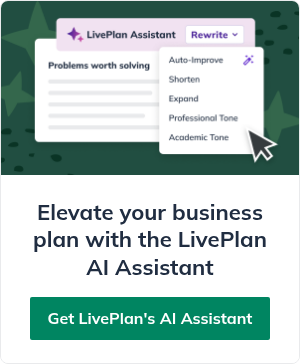Do Visuals Really Trump Text?
Jump to
Your brain understands visual information betterVisual information is simply more effectiveYou’ll be trusted moreHow to improve your presentations and your business with visuals:It’s not just boring—it’s mind-numbing. The information presented is usually hard to understand and nearly impossible to remember.
And it’s not just elevator pitch-type presentations that suffer this malady. When you get that stack of financial reports or that huge Excel file that’s nothing but numbers, most us of tend to tune out. It feels like trying to see the future in tea leaves when you try and draw any conclusions from that sea of numbers.
Poorly presented information, at best, just bores your audience. But at worst, it will ensure that your business doesn’t get funded or you lose that next big deal.
I’m prepared to declare poor information presentation an epidemic. There are just too many bad presentations and financial reports out there.
Fortunately, there’s a cure.
The fancy term for it is “data visualization” but what that really means is simply turning your data and presentations into charts, graphs, and images instead of spreadsheets and bulleted lists.
I’ll give you a few tips on how to visualize your data, but first, let’s talk about the scientific reasons why you should use visuals instead of text.
Your brain understands visual information better
Humans have been communicating with each other for approximately 30,000 years, but we’ve only been using the written word for about 3,700 years. That’s barely 10 percent of the total time that we’ve been communicating with each other.
Because of this long, long history of communicating without text, our brains are simply hard-wired to process visual information better and faster than we process text.
In fact, 90 percent of the information transmitted to the brain is visual. And, perhaps because of this incredible amount of information that we’re consuming, we process visual information 60,000-times faster than text. A quick side note: although the number 60,000 has been widely quoted across various reputable sites online, we have not been able to find the original source.
That’s astonishing. That means that at a glance, we consume more information than when we sit down to read an entire book.
Part of what helps us process visual information so well is that we can process multiple images simultaneously. With text, we just process one word at a time. When you think about it, that’s a pretty slow and inefficient process.
Finally, according to Dr. Lynell Burmark, Ph.D. Associate at the Thornburg Center for Professional Development and writer of several books and papers on visual literacy:
“Words are processed by our short-term memory where we can only retain about seven bits of information (plus or minus two). This is why, by the way, that we have seven-digit phone numbers. Images, on the other hand, go directly into long-term memory where they are indelibly etched.”
Go ahead and try to remember a 10-digit string of numbers. I dare you. It’s harder than you think.
Because our brains have to work so hard to process text, it’s not surprising that on average, people only read about 28 percent of the words on a web page. I guess I should count myself as lucky if you’ve actually read this sentence I wrote!
Visual information is simply more effective
Not only does our brain process visual information so much more effectively than text, but visuals are also simply more persuasive.
A 3M-sponsored study found that presenters who use visual aids are 43 percent more effective in getting people to do what they want.
Imagine that you’re trying to get funding for your business and that your presentation could be that much more effective if it presents data visually instead of with text. I’ll bet that any entrepreneur would take advantage of that fact if they knew the statistics were that much in their favor.
And not only is visual information easier to understand, but visuals make complex data more accessible, understandable, and usable. When you use charts and graphs to display your data instead of grids of numbers, you’ll uncover patterns and relationships that you can’t see in standard reports.
You’ll be trusted more
Beyond being easier to understand, visual presentations and good design will increase your credibility.
When the Stanford Persuasive Technology Lab asked 2,440 participants how they evaluated the credibility of websites they were shown, almost half (46.1 percent) said that the website’s design look was the number one criterion for discerning the credibility of the presented material.
This dwarfed all other criteria that people used to judge the credibility and quality of a business. In fact, people make their first judgment of the quality of your content in only about 50 milliseconds—that’s only .05 seconds!
How to improve your presentations and your business with visuals:
1. Replace text with evocative images in presentations
If it’s not obvious enough already, you should use fewer words and more visuals because visual presentations have such amazing power.
“It’s actually really hard to execute and takes a lot of restraint,” IDEO’s Nicole Kahn says. “But there’s very important reasoning behind it: When you have visuals on the screen and not a lot of words, you make people dependent on you as the presenter to know what’s going on. You have the authority in the room. The slides do not.”
“When you put up a sea of text, you become completely redundant,” Kahn continues. “The audience is trying to read the slide at the same time I’m just repeating what’s written on it—and they can probably do it better and faster than I can. I have no advantage.”
Start thinking about your presentations as a classic slideshow that you’re narrating. Use pictures to represent what you’re talking about and then narrate the show.
But, what about handouts and takeaways? Try using the “speaker’s notes” function in Powerpoint and Keynote. You can put your bullets and other text content into this area and then send files or print presentations with speaker’s notes enabled. This way, you control the presentation while you’re giving it, but you can still have a good takeaway to give your audience if you need to.
2. Use a business dashboard for financial reporting
Instead of sharing the standard P&L, Cash Flow, and Balance Sheet with your board of directors, try using a business dashboard. I use our product, LivePlan, as a dashboard to review how our business is doing and to review month-end reports with the board and management team. It’s almost entirely visual charts and graphs (with the standard data grids if you need them) and it does a great job of helping us get real meaning from the numbers.
We use the printed and PDF reports in our board meetings at Palo Alto Software. It’s helpful because we’re able to present the right level of detail, without providing too much opportunity to get mired down in tiny details that are best managed by our teams on the ground. Our CEO also uses these LivePlan reports for trustee meetings for nonprofits she works with.
Charts and trend reports help us easily compare our plan to our actual results and easily spot-check how we’re doing compared to the same time last year. At a glance, I can see how things are doing in the business, what the trends are, and how we compare. And that’s all at a fraction of the time it would take to get the same meaning from a bunch of spreadsheets.
Visuals make it easier to quickly understand your numerical data.
3. Use visual marketing
When we’re crafting new ad campaigns, there’s always so much I want to say about our product. I want to talk about all the great features we have, all the benefits companies will have from working with us, and how we’re a great company to work with.
But, nobody’s going to read all of that. A page full of text isn’t going to grab a prospect’s attention. Instead, we try and find evocative images that communicate our message. Plenty of times, we just show our product because that’s what people want to see. In these cases, a picture is really worth a thousand words.
4. Try Pinterest if it’s right for your business
Here at LivePlan and over at our Bplans site, we’ve been trying to experiment a bit more with Pinterest. While we’ve been on Facebook and Twitter for a while, it’s been fascinating to see how much engagement and even traffic we’ve been getting from Pinterest.
Given the visual nature of Pinterest, it’s an interesting insight into how important visual information is compared to the more textual format of networks like Twitter.
And, the numbers back this up. Pinterest generates more referral traffic for businesses than Google+, YouTube, and LinkedIn combined.
Pinterest also drives sales directly from its website—of people with Pinterest accounts, 21 percent have purchased an item after seeing it on Pinterest. (And many thanks to HubSpot for finding these stats!)
Pinterest isn’t the only solution for brands that want to share information and data visually. Keep Instagram in mind too, especially if your audience skews younger.
At the end of the day, the message for entrepreneurs is a simple one: Focus on design and visuals.
Whether you’re presenting to your board, doing a sales pitch, or building a marketing campaign, your image choices are critical. Not that text doesn’t matter, but paying special attention to your visuals will have a big impact on your business.
Editor’s note: This article was originally published in January 2016. It was revised in June 2018.
More in Planning

planning
How to Plan for the Impact of Tariffs

planning
Paid Vs. Free Business Plan Software — Which is Right For You?

planning
I tried the “Deep Research” features in ChatGPT and Gemini. Here’s what I found.

planning








